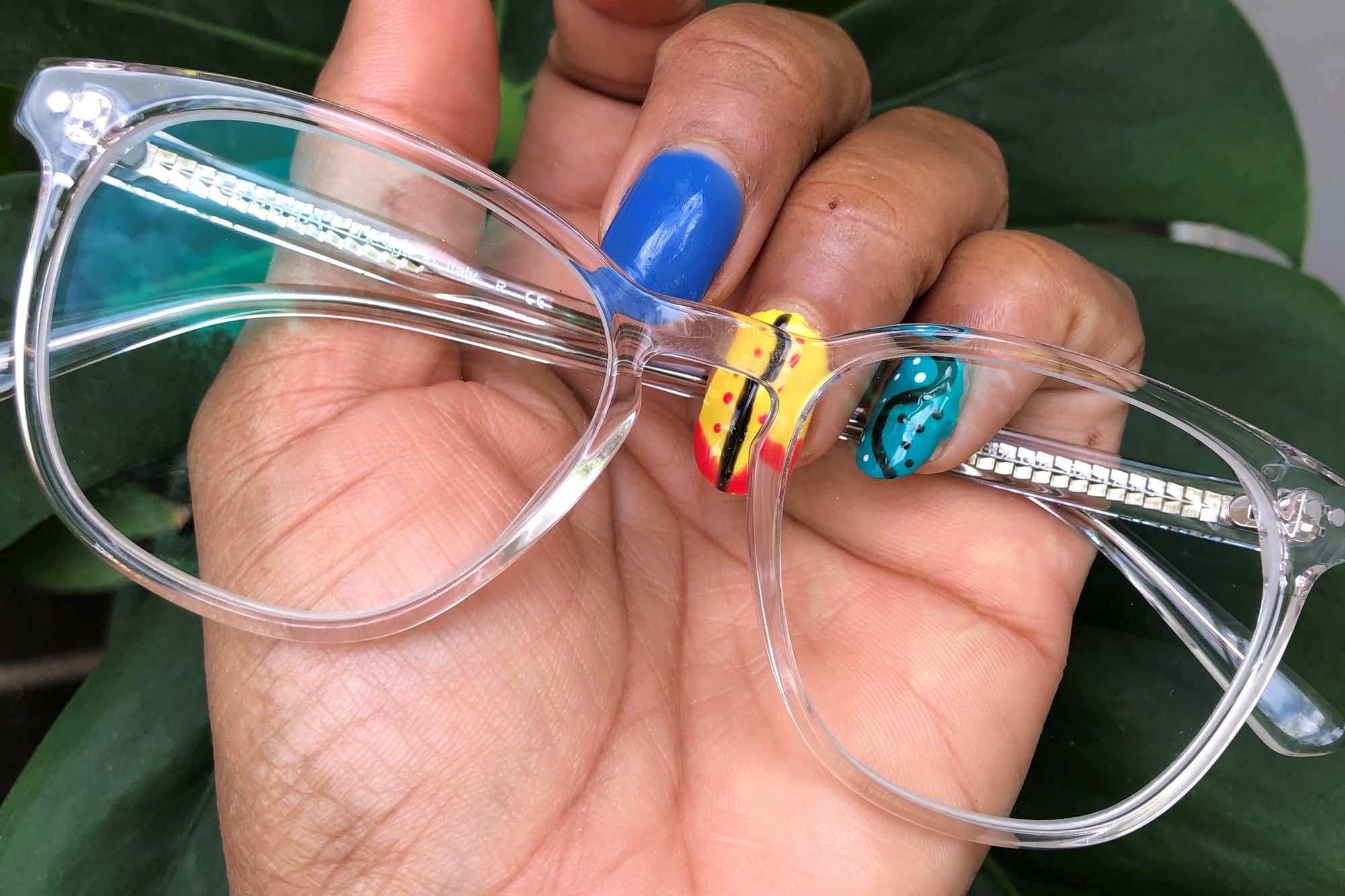The frame of prescription glasses
At present, the more common materials for frames are non-metal and metal. Non-metals mainly include TR90, sheet material, etc., and metals include alloys, titanium, and so on. TR90 and sheet material are actually plastics, but they are firm and are not easy be deformed at room temperature. Also, they have good formability so that they can be made in many fashionable styles. The general alloy material has good firmness and flexibility, but the disadvantage is that it is easy to fade. The pure titanium frame is corrosion-resistant and very strong. It is about 40% lighter than the general alloy frame. It must be welded and electroplated in an oxygen-free state, which requires high equipment and technology. Relatively speaking, the price of TR90 and alloys will be lower, and pure titanium will be more expensive. You can choose according to your budget.
Choose clear glasses for kids of suitable temples and nose pads.
Children's head is very different from adults, especially the height of the bridge of the nose. Most children's bridge of the nose is low. Therefore, it is best to choose a high nose pad for children's glasses or an adjustable eyeglass frame for the nose pad. The temples of the glasses should not cause uncomfortable pressure and the glasses should be kept in the correct position. Sporty temples are another option. The temples are very flexible, and they fit well into a child's ear. It should extend to the earlobe and be covered with soft plastic.
How Do Adjustable Glasses Work?
Adjustable glasses are featured with the fluid-filled lens technology that lets you adjust the power of the lens based on the correction level you need. You can twist the dial until you can see clearly. So, adjustable glasses are also called dial vision glasses.
Each of the lenses on adjustable glasses has a membrane that moves outward or inward based on how much fluid the lens contains. The liquid comes from a small syringe connected to each arm of the glasses. You move the dial to pump fluid in or out of the lens. As fluid enters the lens, the lens’s power increases. This can correct farsightedness. Pumping the fluid out can correct nearsightedness.
The principle of adjustable glasses is the same as vision ability. You change the physical shape of the lens just as the physical shape of the eyeball so as to correct your vision.
Jempinis Wood Deer Eyeglasses Holder from Bali, 'Studious Deer'
This charming eyeglass holder from Bali depicts a bold and complex industrious deer. Yudi Suardi designed this holder, hand-carved from jempinis wood, to depict the majesty of a deer. Your glasses fit right in the groove of the deer's head.
How polarized glasses can help you drive
The most important thing about polarized sunglasses is that they can be a good helper when you drive. When sunlight hits your eyes at an awkward angle, these sunglasses will save your life and save you from potential accidents. Polarized glasses can filter out the sunlight reflected from objects such as roads, snow, water, and other objects. It helps to neutralize the effects of reflected sunlight. Polarized sunglasses bring you an incredibly safe driving experience, with almost no interference and no harm to your eyes.
At night, glare and embarrassing lights are everywhere on the road, especially because random drivers come from the opposite side. Some of these driving high beams may disrupt your vision and cause potential accidents. Polarized sunglasses help reduce glare and save your life. Polarized lenses hardly reflect.
You can choose driving goggles.
The goggles partly filter the far-light from the car. Products sold online include glasses with yellow lenses and yellow translucent shades that clip onto car shades. Shades block out oncoming far-light, while glasses prevent rearview mirror glare from vehicles behind. Most of the light emitted by car headlights is short-wavelength ultraviolet and blue light. The yellow polyester blocks them while allowing the longer wavelengths of red and green light to pass through, making the headlights softer when seen through the goggles without reducing the brightness of the road and the surrounding environment.
Design principle of progressive multifocal lens
For the same piece of the lens, the top is used to see far, the bottom is used to see close. The upper and lower degrees are different.
There is not a sudden change in the distance degree fixed above the lens to the near degree fixed below the lens, but a gradual transition between the two through gradual changes in refractive power, which has special benefits over common bifocals or trifocal lenses.











































